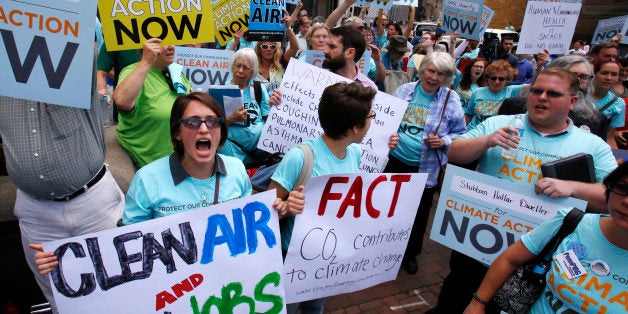
On a beautiful evening in early September, I rode my bike out to Shelli Mullin's Organic Farm in Elburn, IL to meet the 30 or so marchers who were camping there for the night. They had covered 16.8 miles that day, starting out from DeKalb in the morning, and were just finishing up eating dinner as I arrived. While enjoying the solar oven baked brownies (which were delicious) we shared stories of travels and reasons for taking a stand. I bow to the marchers, young and old who left their homes to brave the elements and make this trek through sun, rain and wind, giving all of us another reason to wake up. The Great March for Climate Action started in LA on March 1st and is slowly making its way across the country to arrive in Washington, DC on November 1st. You can look up their path on this 3,000-mile journey and join them for a part of the way, or attend one of their events. The stated goal of the march is to "change the heart and mind of the American people, our elected leaders, and people across the world to act now to address the climate crisis".
Last week another march, the People's Climate March, rallied an estimated 400,000 participants who voiced their concerns with climate inaction by taking to the streets in New York City. The message was received by the President, who made mention of the march in his speech at the U.N. last Tuesday. But while the words spoken by world leaders at the U.N. climate summit may have been more committing to solving the climate crisis than in the past, words are still cheap, and the abhorrent lack of leadership on this issue goes back decades. When President Obama has failed to take significant action to help preserve a livable planet, it is hardly surprising considering that the solutions necessary at this late stage run contrary to the interests of the few who profit most from our consumption driven, high growth dependent economy. The same dirty energy companies interested in maintaining the status quo have successfully stalled meaningful action to reduce carbon emissions and avoid catastrophic climate disruption by means of their significant political influence.
Already today, Earth's changing climate is costing the global economy $1.2 trillion a year, but much worse, killing 1,000 children a day, according to a report by DARA. The annual death toll stands at 400,000 people worldwide and most of the casualties are "due to hunger and communicable diseases that affect above all children in developing countries" concludes the study. As global warming intensifies in the coming years, the death toll could rise to 700,000 a year by 2030.
As is always the case when disaster hits, it is first and foremost the poor who are dying, and more specifically it is the children and women who are paying the steepest price for two centuries of indulgence with fossil fuels, which has primarily benefited the more developed parts of the world. Although most of human suffering and economic damage is happening in the world's poorest nations, nobody will be insulated from the effects and climate impact could cut the U.S. GNP by 2% by 2030. A new study, partly sponsored by NASA's Goddard Space Flight Center, has highlighted the prospect that global industrial civilization could collapse in coming decades due to unsustainable resource exploitation and increasingly unequal wealth distribution.
In her latest book, This Changes Everything, Canadian journalist and writer Naomi Klein reasons that solving the climate crisis will require switching to local, renewable energy production that will break the control on power of entrenched dirty energy companies. She also postulates that this is an opportunity to create a new economy that depends less on unregulated exploitation of resources and people, and more on producing services and values to benefit the many, close the gap between rich and poor, and reinvigorate democracy from the ground up.
The only way to stave off the most catastrophic climate disruptions and preserve a livable environment for humans on Earth is to stop burning fossil fuels, and leave 80% of the known carbon reserves in the ground. We have to realize that this flies in the face of the business plans of the major players in the carbon economy, not least the companies that control the major coal, oil, and gas reserves in the world. They are hell-bent on extracting all that carbon and selling it to us at increasing prices, no matter what the consequences are, and we have to stop them. Efforts to divest from carbon are championed by organizations like 350.org, working for example with student organizations to get universities to stop funding fossil fuels. If you have your own investments, ask your financial advisor whether dirty power is included in your portfolio. For a greener 401K alternative, check out Social(k).
Hundreds of thousands of people took to the streets in the largest climate march ever on September 21st to tell the fossil fuel industry to back off. The march sent a clear message to elected officials in the U.S. and abroad that the people wants carbon regulated, and the transition to renewable energy sources can't move fast enough.
Head in the sand doesn't solve the climate change issue. It's time to face it with all that it takes. I'm happy to report that my company, USAgain, was represented by a small contingent at the climate march in New York, and I know more, including myself, would have liked to be there. There will be more opportunities. We understand the marching isn't over yet. The fight for a cleaner and better future is just starting to heat up.